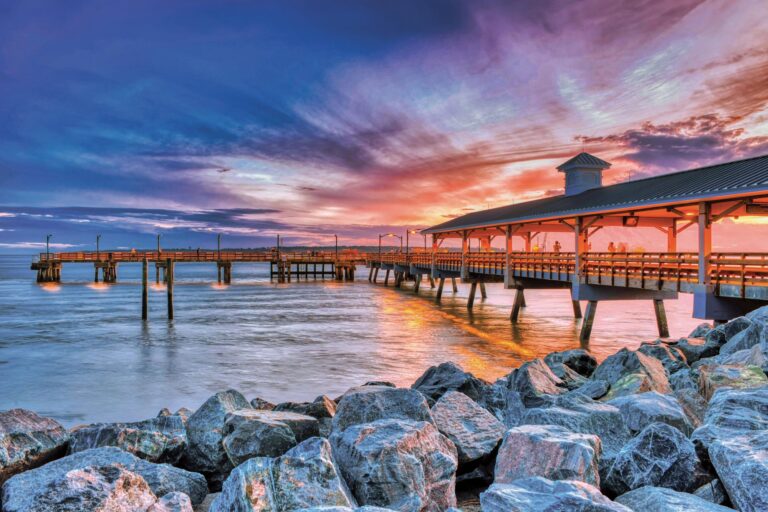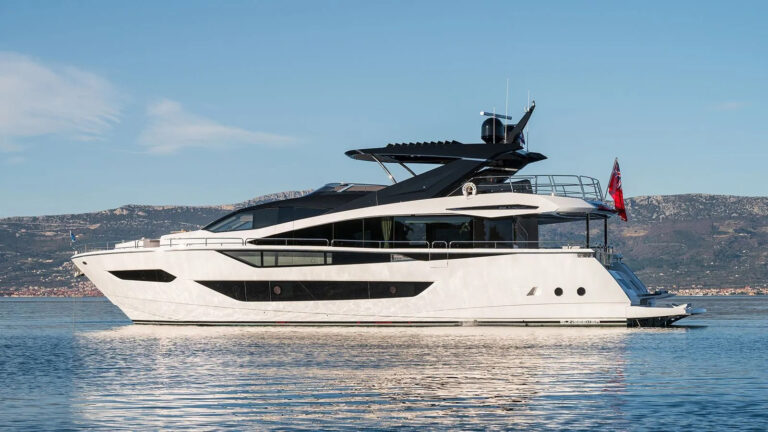When was the last time you heard somebody on the dock bellow, “Oh what a lovely foggy day, just perfect for a boat ride? I’m hoping never. But the frustrating truth is that in many parts of the world, especially my home waters of New England, cruising in the fog is part of the boating routine and sooner or later you find yourself socked in with no visibility.
Even though the hair on my neck still crawls at the sight of a fog bank creeping across the horizon, I’m not too concerned about navigation or running onto the rocks-modern GPS, chart plotters and radar solved these problems. It’s more an issue about other boaters around me who may be over reliant on these systems; the same systems designed to make us safer. This false security may cause some to ignore prudent steps, therefore compromising their safety and the safety of those around them. With this in my mind, besides the COLREGs requirements which state what you should do while running in reduced visibility, I’ve listed seven things not to do next time you’re in the fog.
Don’t program a Go To command directly for a mark.
Although it is comforting to get a visual on a mark or hear the gong of a bell, chances are others have the same intention. For example, once when running to Block Island in thick fog I punched in the red bell outside of the harbor entrance and then hit Go To. While I was about a quarter of a mile out the fog lifted just in time to reveal a gang of boats, which did not show up on radar, converging on the same mark. Today I select a waypoint a safe distance off a mark to avoid the herd looking for a harbor entrance or landmark.
Don’t wait until you’re in the fog to enter waypoints.
I feel a little hypocritical regarding this item, since I recently disobeyed my long-standing maxim while in Maine. It was a beautifully clear August day off Jonesport with the sun shining and land in perfect sight. Minutes later we were socked in and I found myself flipping through charts plotting a safe course while simultaneously trying to input waypoints, move cursors and make sure we didn’t snag any lobster traps. It was a waste of energy that could have been avoided by inputting the waypoints in the serenity of the slip. I’ve now made this mistake three times and hopefully this will be the last. I’ll keep you posted.
Don’t run with the autopilot in close quarters.
I don’t think this is being over cautious. Unless you are blessed with lightning quick reaction, the delay between hitting an autopilot stand-by or dodge key and correcting the course could be too much. Some objects such as lobster traps, floating debris, or even another boat may not always appear on the radar. I realized how important reaction time was years ago while cruising Maine’s Penobscot Bay. We were socked in with less than ten-feet visibility. My forehead was affixed to the rubber rim of an old Decca radar unit-this tank still had vacuum tubes-looking for a rock while my stepmother Stacey was at the helm. We both strained to see ahead of us, and then shazam, the rock appeared directly on our course. Before I could muddle a meek cry for help, Stacey turned the Grand Banks 42 hard over, skirting the rock and mark by a slim margin and throwing my father from his bunk onto the parquet floor. By the time he sprinted to the bridge to see what happened, the fog masked the rock completely. “It’s just a lobster trap, we said. Now the secret is out. Had we been on autopilot there would have been very little time to react and the “lobster trap cover may not have worked.
Don’t turn off the VHF.
Communication is a key component while running in the fog. If you are unsure of a boat’s course, reference their position and give them a hail. Thanks to modern radar, acquiring targets is a lot easier. Also skippers of commercial tugs and ships are very prudent about announcing their course and position and won’t hesitate to communicate if somebody is getting too close. I’ve also found most are very professional and appreciative when you contact them to discuss heading scenarios. If your radio is off you may miss the call. And if you can’t hear your VHF from the helm, install a remote VHF speaker.
Don’t put the paper charts away.
I’m a stick-in-the-mud when it comes to paper charts. So here’s my chance to dust them off for a good use. In the fog I like to use a paper chart along with a chart plotter since it allows me to see the bigger picture-especially in unfamiliar waters. Some of the new combination plotter/radar units are great but the split screen can reduce the size of the chart (unless you’re using a radar overlay). With a paper chart you can stay several steps ahead of your course. It is also easier to plot quick latitude and longitude references when communicating with other craft.
Don’t run at an unsafe speed.
I figured this one was obvious, but have discovered more and more that it’s not. For example, while running back from Montauk this summer on Yachting’s Pursuit 3370 we hit a solid fog bank and throttled back to about ten knots to pick our way through the traffic. On several occasions we were forced to make drastic course changes to avoid being run down by boats moving at more than 30 knots. One convertible buzzed by so close that we could see the captain lounging back at the helm with his feet on the dash. I don’t think he ever saw us, or worse, didn’t care that he almost hit us. If speeds are manageable the time to react increases and the possibility of error decreases.
Don’t keep moving if disoriented.
If for whatever reason you become disoriented or unsure of your surroundings, just stop and regroup. You can verify your position, re-orient yourself and take a breather. Flying off into uncertainty may be one way to go through life but not on a boat in reduced visibility.
Like on the water, we learn from our mistakes. And the more we experience something the more comfortable we become. Or in the case of fog, the more we experience it the more we learn that we want to avoid it.









